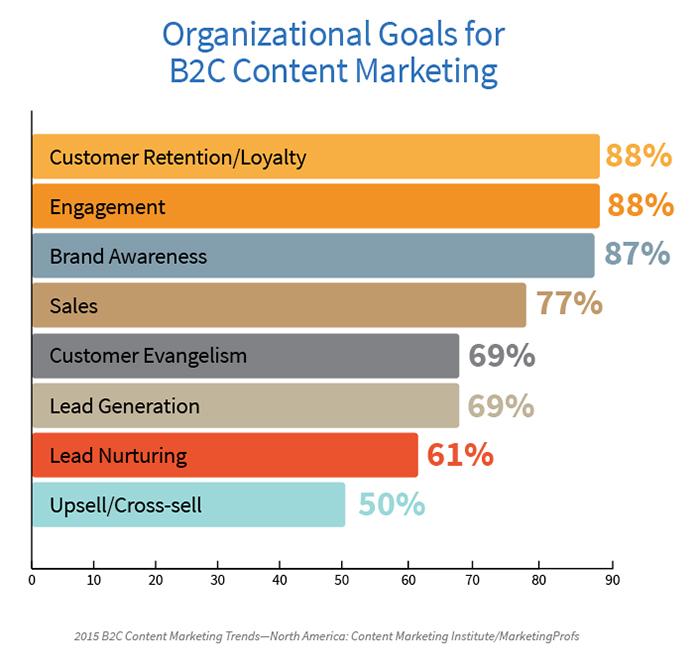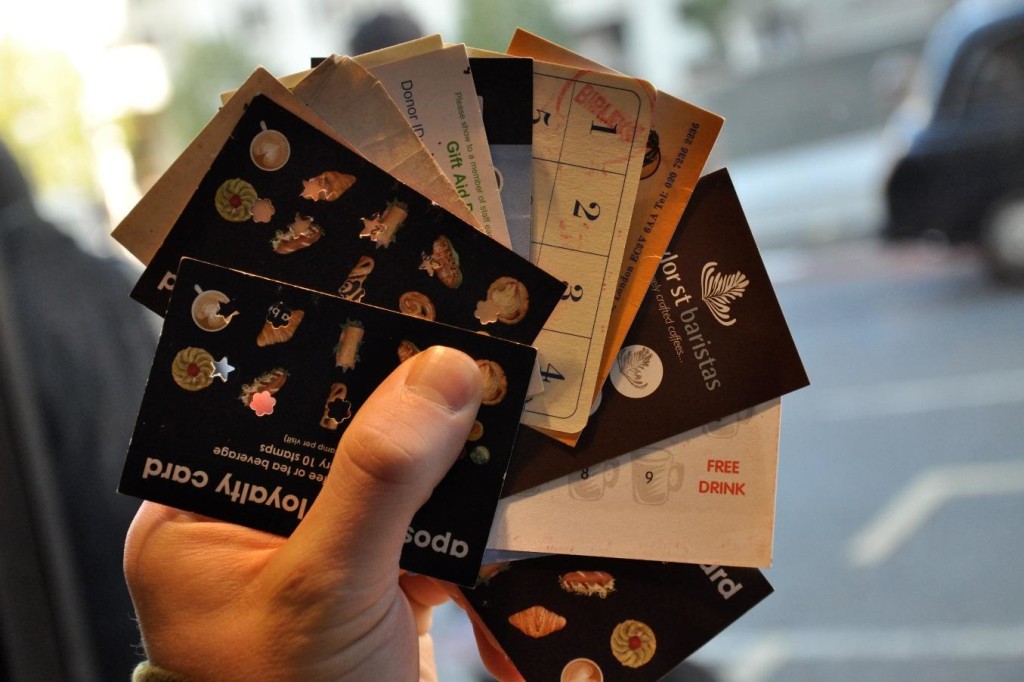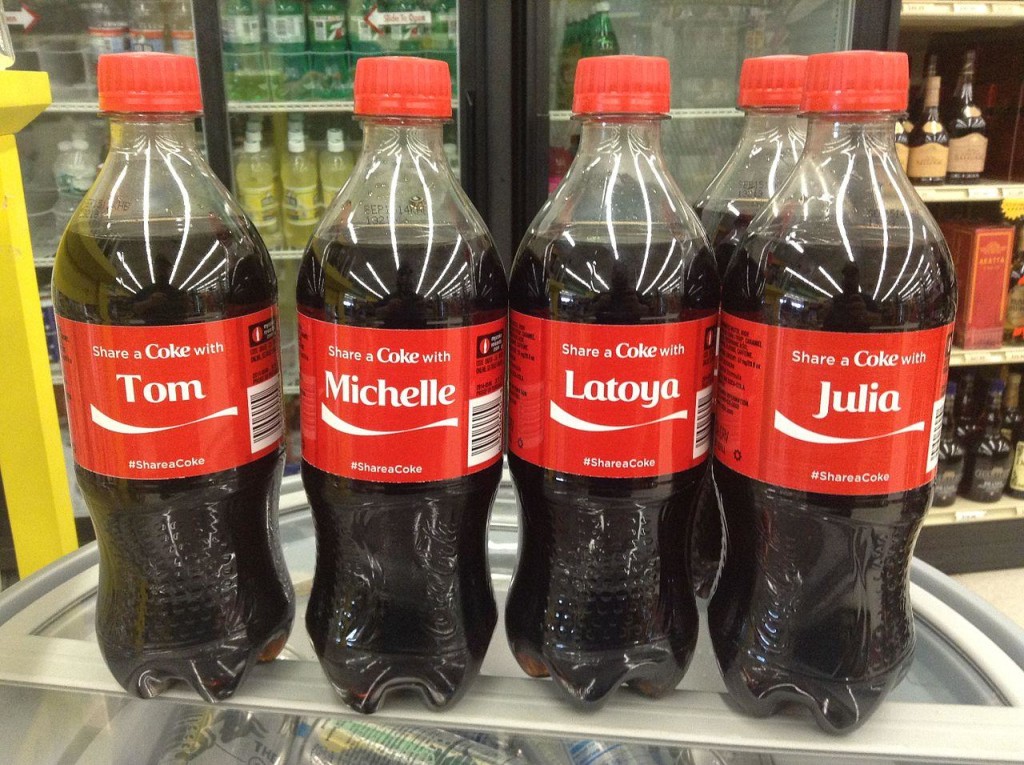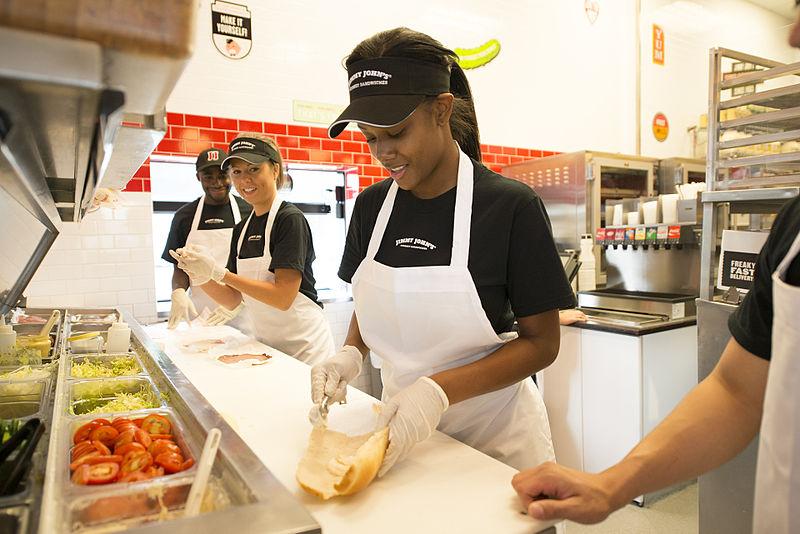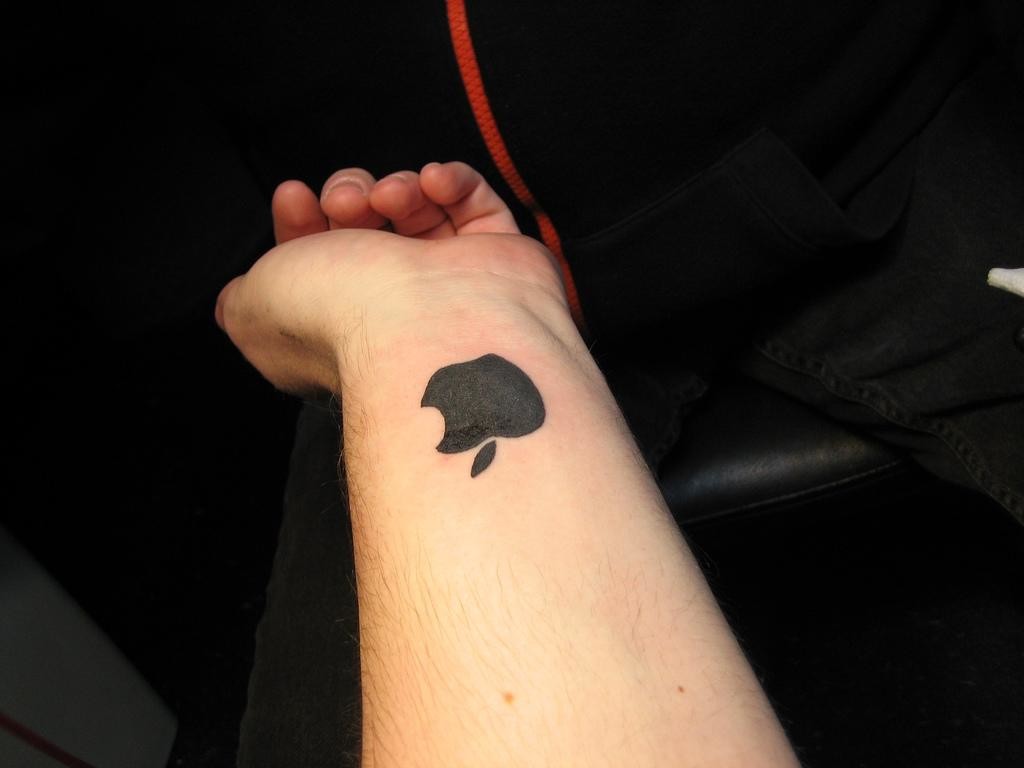When it comes to marketing, there’s strength in numbers.
- The more people you have marketing your products, the better they’re going to sell.
- Also, the more people you have supporting your community, the more enticing it’ll be for others to join in.
Evangelism marketing is the practice of convincing your customers to develop so much brand loyalty that they’re not just willing, but are actively excited about sharing the good word about your products.
From the perspective of the evangelist, this makes perfect sense:
- They’ve found a product that they really enjoy, and they know their friends will love it too
- They want to be able to geek out about their favorite things with someone else who shares that passion
- If somebody is struggling to use a product, they’re happy to share their expertise to help them solve the problem.
A stronger community of fans for a product means that everyone has more fun.
It also means that your products will sell better – friend recommendations are hugely important to the decision to make a purchase for many customers:
- 77% of buyers are more likely to buy a product if their first interaction with it comes from a friend or family member.
- Marketers are aware of this importance: 88% of marketers count customer loyalty as one of their top priorities, and 69% are actively working to encourage brand evangelism.
That said, it can sometimes be difficult to convince a customer base to buy into your brand so much that they’re willing to take to the streets.
Some products have an easier time of getting people excited than others:
- New computer or phone technology already has an in-built community of enthusiasts
- Other products, such as toasters, don’t have the same pre-existing community of excited users.
If you’re looking to build up your brand’s community and turn your customers into brand ambassadors, you’ve come to the right place – I’ve compiled a guide to turning your casual users into enthusiastic, die-hard evangelists.
The Most Important Thing
There’s one thing that every brand absolutely needs before it can build a strong following of customer evangelists:
- Put simply, if you want people to rave about your company, you need to give them a reason to. It’s that simple.
So, bearing in mind that you’ve already put a lot of work into creating a powerful, successful product that everyone will love, how can you convince customers to share it with their friends?
Inspiring Loyalty
The truth is, inspiring an evangelist attitude comes from more than just a great product.
- As I said earlier, plenty of great products don’t have a solid community of users who rally around them.
- The trick is to get customers to think of your product as a lifestyle choice, rather than as a necessity.
As much as you want customers to feel like they can’t live without your product, you also need them to feel like they made an active choice in buying from you.
- This choice is important from a psychological perspective – it gives customers a sense of belonging to an exclusive club of like-minded people.
- Once they’re in the club, they’ll be eager to start recruiting their friends and family to join as well.
One common way to create this kind of loyalty is through the introduction of an incentivized loyalty scheme.
- Schemes which reward customers for multiple purchases mean that customers keep coming back for more.
- It’s rare, though, for customers to get so excited about their fringe benefits that they start sharing your products far and wide.
So, to make a club that people want to participate in, you need to build a community.
Building A Community Around Your Product
It’s not always easy to convince people to rally behind your product.
To build a group of dedicated fans, you’ll need to provide your customers with several things:
- A space to openly discuss your products
- Plenty of help and assistance when users need support
- A reason to keep coming back to your website
- Freedom to express any kind of opinion (even negative or off-topic ones)
It’s crucial that your customers don’t feel like their comments will be censored or filtered in any way – they need to know that their opinions are listened to, and that the comments they see from other users are genuine.
For this reason, the best way to attract users to your community is by appealing to their needs.
This can include:
- Publishing relevant content that’s aimed at existing customers, not just attracting first time buyers
- Providing a dedicated, fast support service for those who run into trouble
- Offering (often unexpected) rewards and bonuses for those who get involved
Basically, the trick to creating a healthy community around your product is working to market your company to people who are already customers, and strengthening your bond with existing regulars.
To do this, you’re going to need to know exactly what your customers need, and how you can improve the service that you offer them.
Research Customer Needs
Researching what your customers want is a fantastic way to help convert existing users into evangelists.
This is the case for several reasons:
- Getting clear feedback from your customers helps you to better tailor your post-purchase service to help develop a stronger bond with your customers.
- Showing that you’re interested enough in their opinion to seek their advice helps customers to trust your company.
If customers feel that they’re genuinely being listened to, they’re more likely to share with you – which inevitably leads to sharing with other customers, and the development of a community.
What’s more, you can take the feedback you get and turn it into constructive improvements that can be made to your service, making sure that future customers are happier with the aftercare you provide.
The Correct Space for Feedback
When it comes to collecting opinions and feedback, there are plenty of options for collecting large amounts of data through automated services and systems, such as questionnaires and feedback forms.
These are not ideal for encouraging brand loyalty.
You can definitely get a lot of great data from these resources, but one key element of developing a strong relationship with your customers means letting them speak openly, and in a public setting.
This can include:
- Internet forums
- Social media groups
- Website comments sections
It’s important that your customers are able to express themselves fully, without being constrained by the questions that you ask.
- A customer might want to give you feedback that deviates from the questions you’ve asked, and not giving them a dedicated space for their concerns will lead to frustration as the customers feel like you’re not taking their feedback seriously.
For this reason, it’s important that customers can see the concerns and issues that other users are raising.
- This leads to camaraderie between customers, and some users might even get involved in helping to solve issues when they arise and provide troubleshooting advice.
- This is the case with plenty of tech support forums on the internet, including many such as Microsoft’s which are run by the company itself.
Dealing With Negative Comments
Obviously a public space will lend itself to some abuse, as customers who are less than pleased use it as an opportunity to vent frustration.
- The natural response to these comments will be to either censor or remove them, or at best to simply ignore them.
- In reality, though, these comments will go a long way to helping your community develop.
If you react with courtesy and friendliness when users bring up concerns, it’ll go a long way to helping other customers learn to trust and respect your platform – even if you can’t solve their problems.
- They know they can be open and honest, and no matter what, your company will work to address their concerns and help them to overcome their challenges.
- They also know that your brand can be approached in any context and will respond with warmth and respect – helping to further establish your company as a friend whose products are worth sharing with others.
In some circumstances, you may even find that argumentative commenters are dealt with by other members of your community:
- Seeing a brand that they enjoy suffering from abuse will lead others to develop greater solidarity and support for your company
- Your customers will become more dedicated and eager to share details about your products with others, to counteract the negativity they’ve seen from some other users.
- A good community tends to filter out bad eggs naturally, while the threat they pose means that other community members close ranks and develop closer ties.
Of course, this is the best case scenario – sometimes you might have to step in and mediate over arguments, but your goal should be helping users to befriend each other, and sometimes that means giving them the freedom to express themselves fully.
Make It Personal
So you’ve built a solid online space that your customers can interact, either on a website you control or on social media.
- The next step is encouraging them to invite others to join in the discussion.
There are plenty of examples of this done well, but let’s have a look at one that you should be familiar with: Coca-Cola’s Share a Coke campaign.
In order to draw more customers to their products, Coke started to print special labels for the bottles.
In a massive campaign that has seen hundreds of thousands of unique labels printed, Coke personalized their bottles and cans.
- Each bottle and can invited the drinker to ‘share a coke with’ a person, with large random names printed in the Coca Cola font.
Coke drinkers around the world have jumped at the opportunity to share their favorite drink with friends, whenever they’ve discovered a can or bottle that appears to be personally labelled for somebody they know.
- What’s more, plenty of new customers or occasional drinkers have been brought into the Coke fold as they’ve seen a drink that literally has their name on it.
The lesson to take away from this: customers respond positively and eagerly for a chance to share your products if you point them in the direction of who they should be sharing with.
So how can you put this to use in your own marketing campaigns?
- First, it’s important to remember that many of your customers want to share products they enjoy, they’re just looking for an opportunity.
Evangelism doesn’t come naturally: you need to teach customers how to share.
Teaching Behavior
I’ve talked already about how customer evangelism needs to come with a reward.
There are plenty of possible ways of encouraging sharing, but the best rewards are often social. This can include:
- Making the product more enjoyable if it’s shared.
- Financial incentives to sharing with others.
- A sense that through sharing, customers are doing their friends a favor.
Financial rewards are very common in sharing schemes – typically, both the new customers and the old one get a perk, such as freebies or money off their products.
This doesn’t create lasting loyalty, but it can get the ball rolling.
Some products are more enjoyable when they’re shared – these might be added benefits, or they could simply be social enjoyment.
- For example, sharing a well-loved book or movie with a friend leads to a chance to better discuss the book itself.
- Alternatively, there are examples like the video game Destiny, in which if a player recruits a new user, both of them receive special bonus items and dance moves which can enhance their experience playing together.
It’s common for people who become emotionally invested in an online community to want to recruit their friends, and similarly, you want to teach people to invite people they know to join in the discussion on your product.
While financial or exclusive incentive schemes have a limited range of effectiveness, they can help users to begin their first steps of evangelism.
As customers form a pattern of behavior that involves sharing your products with their friends, it will become more and more easy for them to share with others.
Turn Your Brand into a Lifestyle
The next step beyond encouraging and teaching your customers to spread the word about your products is getting to the point where they’re doing it without even thinking.
You’ve met people before who are like this:
- Typically, they can’t help but tell you all about their favorite company.
- Their first and last point of conversation is about something they’re read or heard about what this company is doing.
- If it’s somebody’s birthday, the first gift idea they’ll think of is something from the company.
Electronics companies in particular seem to do a great job of inspiring this kind of devotion, and there’s a good reason for that: technology is a big part of our lives, so choosing a brand means buying into a lifestyle.
It’s possible for any brand to develop a lifestyle around it – common brand types that manage this include:
- Clothing
- Music
- Food
- Literature or movies
There are a few key steps to developing this kind of loyalty. You need your customers to feel like:
- They’re part of an exclusive club – not everybody is allowed to join in the fun.
- They have their own name, culture, language and jokes within the club.
- There’s a rival club that should be avoided at all costs.
These traits are common for the kinds of brand culture that clothing and electronics companies develop – the idea that through association with the brand, users take on the elements of the brand themselves.
This can often be a large, costly branding exercise, but the simplest way to develop this lifestyle is to create content that encourages the development of the culture that you want to build.
Take, for example, Beats by Dre.
It’s not the quality of the product that sells these items – the lifestyle that exist around them is what draws in customers.
- People want to be seen wearing Beats because the brand is associated with being young, exciting and popular.
- A large part of this success comes from the big name celebrity attached to the headphones (Dr Dre is a pretty decent businessman).
- However, its success also comes from the thousands of customers who treat the product like a status symbol, and who will do everything they can to show off their Beats.
So how can you encourage the development of a lifestyle around your brand?
One of the best ways is to provide content for your customers that shows them the way your products can be used to enrich all aspects of their lives.
This can mean:
- Blog articles pointing out the many uses of your products.
- Social media posts linking your brand to current affairs and showing your products in different real world scenarios.
- Portraying your brand as an important, essential part of your customers’ culture.
Coming back to Coca-Cola, the company used a slogan for many years in Britain during important soccer tournaments to create a link between their brand and the national sport:
“Eat Football, Sleep Football, Drink Coca-Cola”.
- This campaign enforced a link in viewers minds between obsessive soccer supporter and Coca-Cola.
- It lead people to believe that soccer fans drink Coca-Cola to support their game.
- To back this up, Coca-Cola also sponsored a series of soccer tournaments to get their branding everywhere.
This is the kind of connection you want to build: your customers should see your product as a vital part of their lifestyle.
When this connection has been made, everyone will expect people like them to buy into your product, because it’s a key part of their identity within their friendship circles.
Evangelism is Contagious
If all of this sounds like a large leap, don’t worry: the hardest part is finding your first few evangelists.
- Enthusiasm for your brand will grow quicker the more people are singing your praises.
- Once you’ve got a few evangelists, it will become exponentially easier to convert more customers.
Think of your army of evangelists as minor celebrities – if you have enough, they’ll add up to the cumulative effect of Dr Dre or other large, popular endorsers.
Love Your Employees
Perhaps you’re looking at your current customer base, and you’re wondering how you can begin starting to turn your existing pool of users into evangelists.
If this is the case, it’s worth considering the perfect team of brand evangelists you already have at your disposal: your employees.
- If your employees are invested in the company, they’ll be eager to tell everyone they meet about how wonderful your brand is.
- They also present a good first impressions for people associating with your brand for the first time, making them crucial to creating a positive company image.
In order to help your employees become enthusiastic about your brand, you need to:
- Listen to their needs and provide an enjoyable working environment
- Give them a reason to feel personally interested in the future of the company
- Let them know what the company goals are and what the plan is for reaching them.
Employee loyalty isn’t something that can be forced, though: any time when a company attempts to control what employees post on social media, it tends to backfire.
Instead, you need to focus on making sure your employees are as happy as possible, and they’ll develop loyalty and excitement about your brand as a result.
Be Nice, Reap the Rewards
Above all, the most important step in encouraging customer evangelists is giving them a good reason to love your brand.
This can be done through:
- High quality products
- Great customer service
- Happy employees
- A positive culture surrounding your company
If you can use these tools to develop strong brand loyalty, your customers will naturally want to shout your praises from the rooftops.
Have another suggestion for driving sales with customer evangelists? Leave your best battle-tested tips in the comments section below:
Images:
Flickr, Content Marketing Institute, Flickr, Wikipedia, Flickr, Wikipedia, Microsoft Answers, Flickr, Flickr, Wikipedia, Pixabay, Flickr, Flickr, Google, Wikipedia, Flickr.




